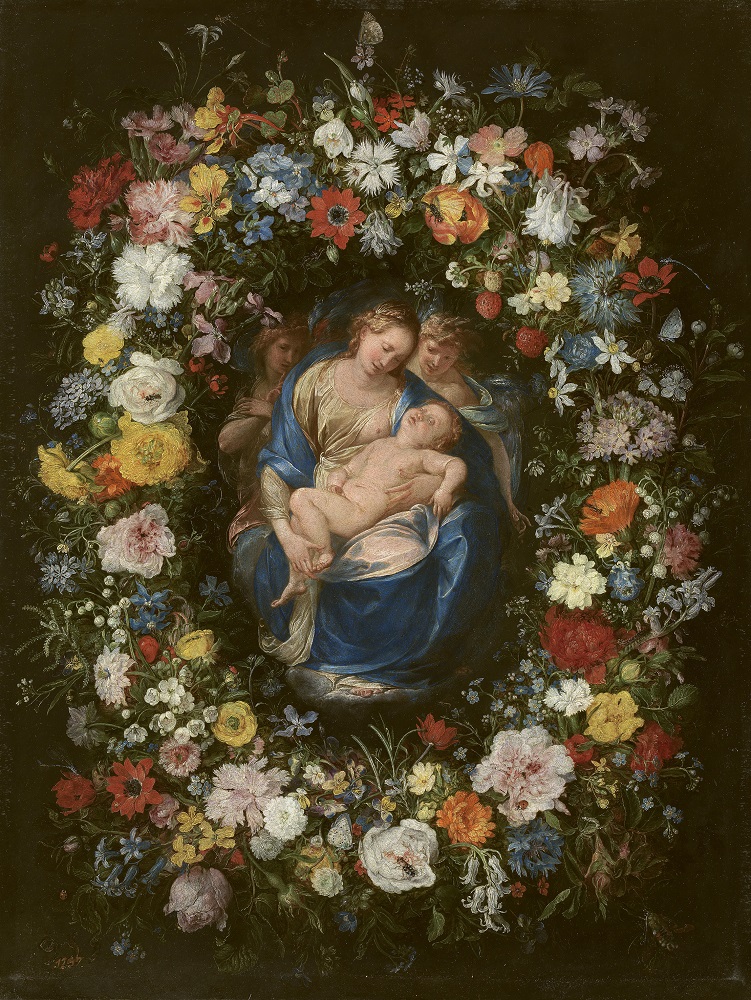Angelo Lo Conte
Landscapes & Garlands of Flowers: an example of naturalistic Lombard devotion.
 This paper explores the invention and the development of the garland of flowers in European art, characterizing it as an example of mutual synergy between Italian philosophy and Flemish art. During the second half of the sixteenth century, Christian philosophy was strongly influenced by figures such as Filippo Neri, Agostino Valier and Federico Borromeo, who introduced a second wave of Counter-Reformational thought based on an innovative, optimistic idea of the world and of mankind’s role in it. According to this interpretation, all created things, animate and inanimate, had a positive value. Nature was thus seen as a manifestation of God’s goodness, and contemplation of nature became a way to establish a spiritual connection with God. Federico Borromeo, Archbishop of Milan, explored this philosophical approach in the creation of his private art collection, which included a selection of forty landscapes, painted by the most important Flemish masters of the time. Prominent among these paintings is the first example of a new type of devotional iconography: the Madonna set within a garland of flowers, a mixed genre created in collaboration between Federico Borromeo and Jan Brueghel the Elder, in which human figures are combined with both landscape and still-life elements.
This paper explores the invention and the development of the garland of flowers in European art, characterizing it as an example of mutual synergy between Italian philosophy and Flemish art. During the second half of the sixteenth century, Christian philosophy was strongly influenced by figures such as Filippo Neri, Agostino Valier and Federico Borromeo, who introduced a second wave of Counter-Reformational thought based on an innovative, optimistic idea of the world and of mankind’s role in it. According to this interpretation, all created things, animate and inanimate, had a positive value. Nature was thus seen as a manifestation of God’s goodness, and contemplation of nature became a way to establish a spiritual connection with God. Federico Borromeo, Archbishop of Milan, explored this philosophical approach in the creation of his private art collection, which included a selection of forty landscapes, painted by the most important Flemish masters of the time. Prominent among these paintings is the first example of a new type of devotional iconography: the Madonna set within a garland of flowers, a mixed genre created in collaboration between Federico Borromeo and Jan Brueghel the Elder, in which human figures are combined with both landscape and still-life elements.
This new iconography was particularly popular in Lombardy, Flanders and Spain, where it was further developed. In Milan, Carlo Antonio Procaccini replaced the central Holy Family with devotional landscapes. In Flanders, the genre was adopted by painters such Jan Brueghel the Younger, Frans Snyders and Daniel Seghers, who enriched the garland with cartouches, refined stones and other decorative elements. In Spain, the iconography was especially appreciated in Castile, reflecting the interest of local collectors in both Italian and Flemish art. The spread of this new genre across Europe highlights the important role played by Federico Borromeo in the development of seventeenth-century art and draws attention to the mutual influences between Lombard and Flemish art.
Date: Monday 25 November 2013, 6:30pm
Venue: Room 205, Old Arts Building, University of Melbourne, Parkville campus.
Click here for a map.
All Welcome
The EVCS is brought to you by the Melbourne Art Network with the support of the Art History Program at the University of Melbourne
